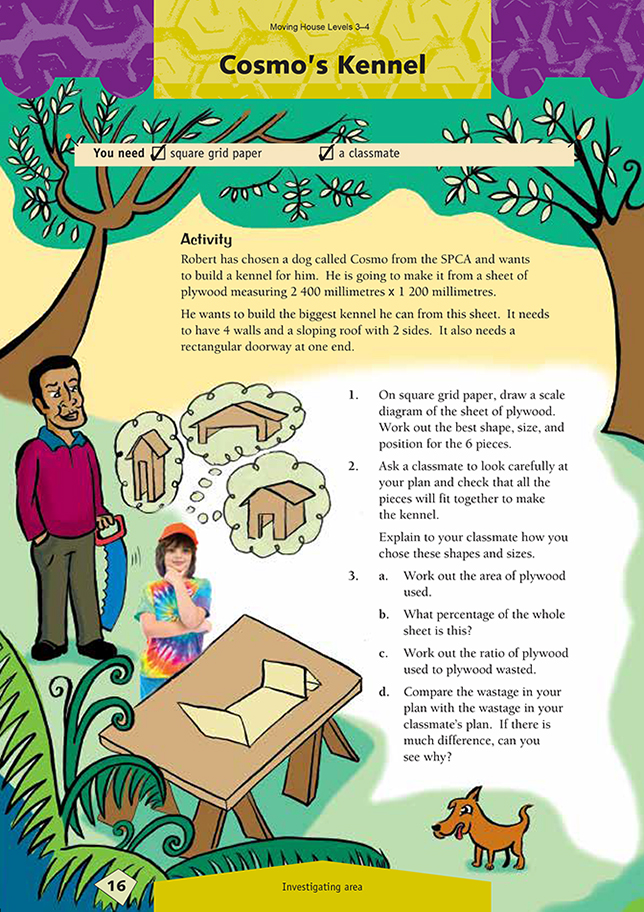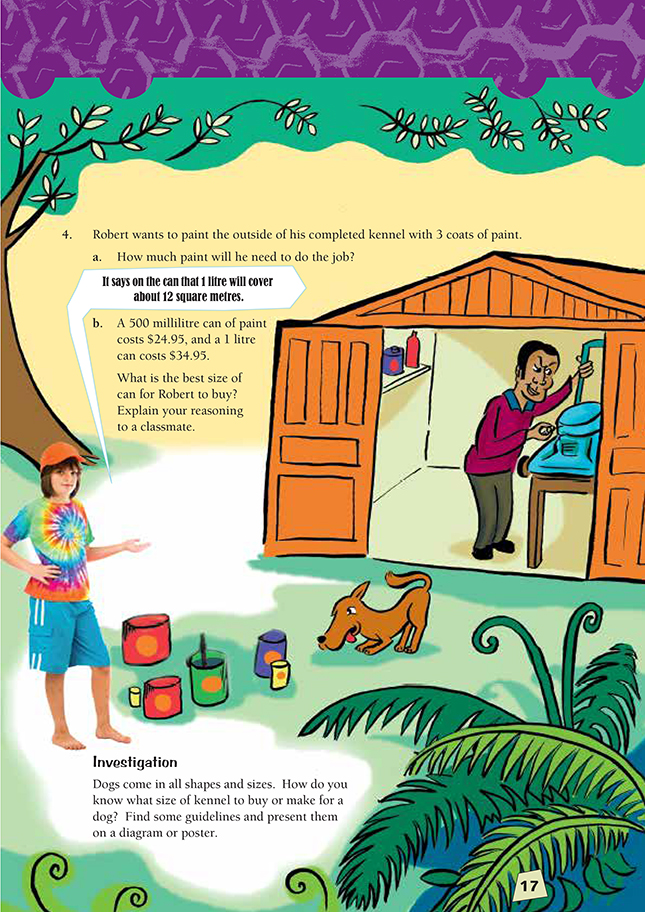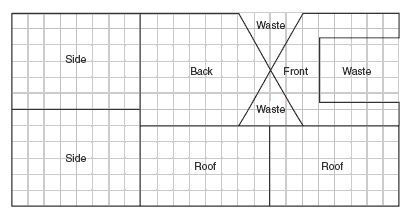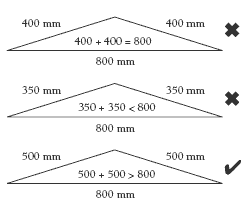This is a level 4 measurement and number activity from the Figure It Out theme series.
A PDF of the student activity is available.
Click on the image to enlarge it. Click again to close. Download PDF (380 KB)
calculate area of rectangles
draw a scale diagram
find the best buy using simple proportions
FIO, Levels 3-4, Theme: Moving House, Cosmo's Kennel, pages 16-17
Sqaure grid paper
A classmate
This activity asks students to draw to scale, on square grid paper, a sheet of plywood measuring 2 400 millimetres × 1 200 millimetres. Discuss choosing the scale. It should be convenient to use while at the same time allowing the student to draw a good-sized rectangle.
The next task is to draw within this rectangle the six pieces that will make up the kennel. Discuss the shapes of the pieces needed: two sides, two ends, and two sloping planes for the roof. Ensure that the students are aware that the sum of the widths of the two roof pieces must be greater than the width of the kennel. They will need to check that this is the case when they review their classmate’s plan as part of question 2. (See page 21 for further discussion on this.)
Determining the exact size, shape, and placement of each piece on the scale diagram is a trial-anderror exercise. The students may find that they won’t have enough plywood to make a kennel with the dimensions they originally planned. For this reason, they may find it best to work with pencil and eraser and may need a number of sheets of grid paper. Remind them that they are to use as much of the sheet of plywood as possible.
Some students may realise that a more systematic approach to the problem is to imagine the scale sheet of plywood divided into six equal pieces with a single line down its length and two lines across its width. If they do this, they can see the average size of the six pieces that will make up the kennel. They will probably go on from here to conclude that the most economical length for the kennel is 800 millimetres. They will need to experiment with the dimensions of the front and back
pieces so that the proportions seem right and so that the two roof planes are wide enough to overlap the walls when assembled. This diagram shows an economical way of making the cuts:
Before the students begin question 3, revise the concept of area (the size, or measure, of a surface, expressed in square units), and the formulae for a square, rectangle, and triangle. Also discuss the units of measurement. The linear dimensions of sheet timber are normally given in millimetres, but the area is expressed in square metres. Millimetres are convenient for measuring length because the builder only has to remember a simple number (for example, 1152 millimetres, instead of 1 metre, 15
centimetres, and 2 millimetres) and avoids using a decimal point. Square millimetres are, however, unsuitable for measuring area, because they are so tiny. Square centimetres are unsuitable for the same reason. In this activity, therefore, the students should convert millimetres to metres before calculating areas. They will find this much easier than the alternative of working in square millimetres then trying to convert the result into square metres. They need to learn the skill of selecting suitable units for a particular measurement task and moving confidently between different units.
For question 4, make sure that the students know that Robert wants to put 3 coats of paint on the kennel. They also need to know that they must be able to justify their decision as to which is the best size of can to buy. The answers have a full discussion of this decision, but as long as Robert uses at least 69 percent of the sheet of plywood, he will need to buy 1 litre of paint.
If you wish, the students could do a useful investigation into the reasons why the sum of the widths of the sides of the roof has to be greater than the width of the kennel itself. Give them various lengths, such as 2, 2, 2, 3, 3, 4, 5, 6, 6, and 6. Ask them to choose three lengths and see if they can make a triangle from them. When all the possibilities have been explored, the students should see that the sum of the lengths of any two sides of a triangle has to be greater than the length of the third.
Interested students could go on to make a scale model of their kennel, using card.
Answers to Activity
1. Practical activity
2. Check that:
• all six pieces are there
• the edges that have to fit together are the same length (the roof, however, can overlap)
• the width of the two roof pieces put together is greater than the width of the kennel
• there isn’t too much plywood being wasted
• the doorway is likely to be a suitable size for a dog.
3. a.–b. Answers will vary.
4. a.–b. Answers will vary, depending on the amount of plywood wasted. As 1 L of
paint covers about 12 m2, 500 mL will cover 6 m2. Robert wants to put three
coats of paint on the kennel, so he will need the bigger can if the total surface to
be painted is greater than 2 m2.
Investigation
Answers will vary.



